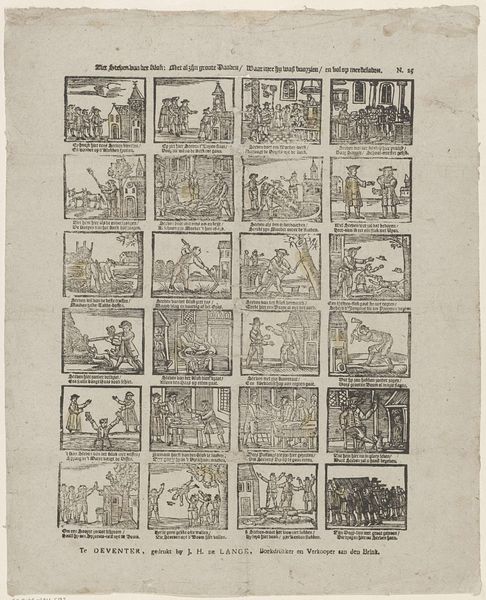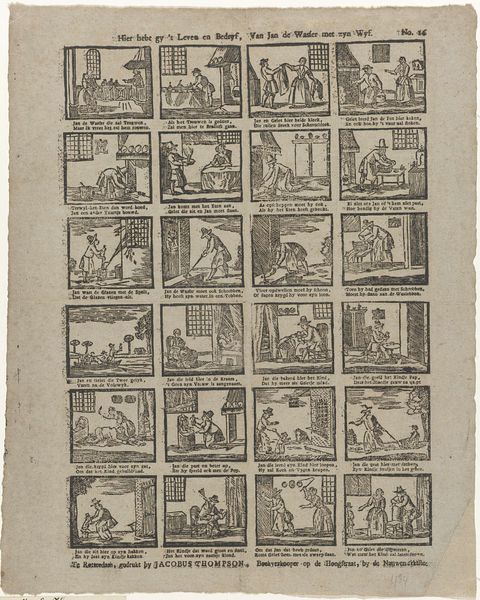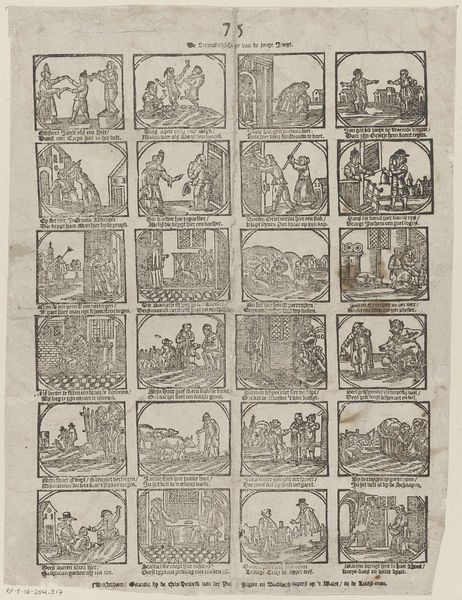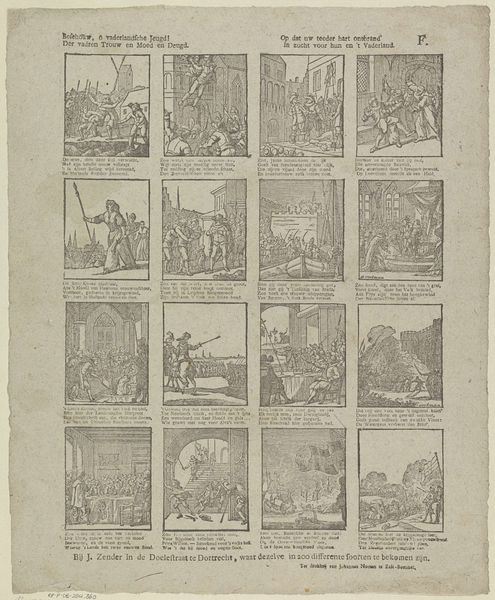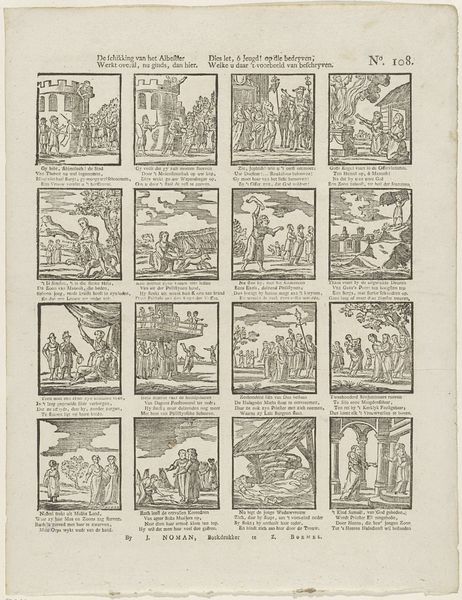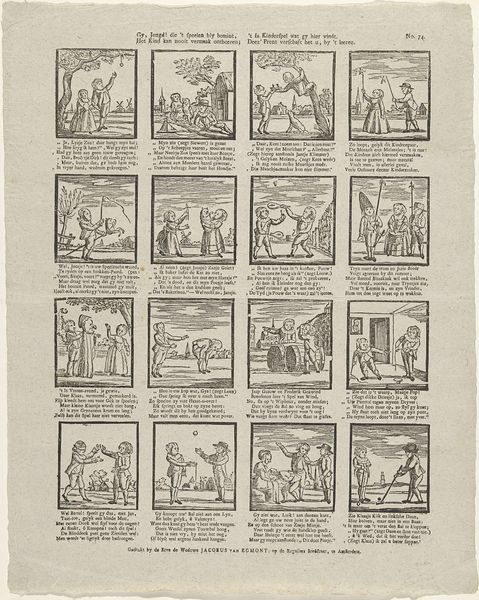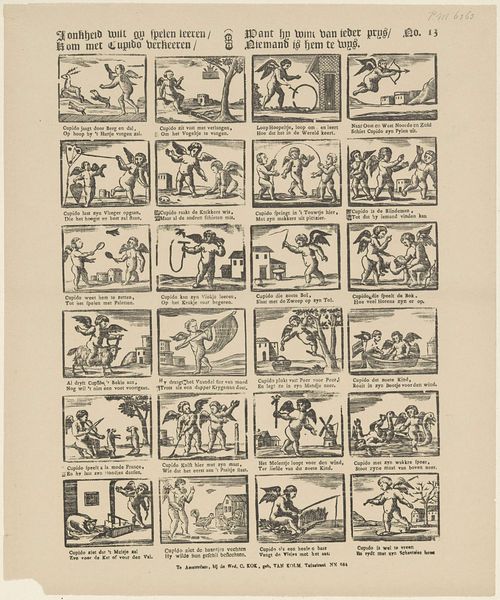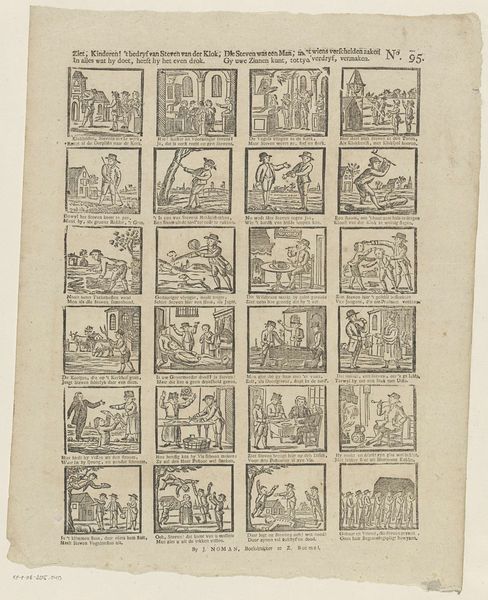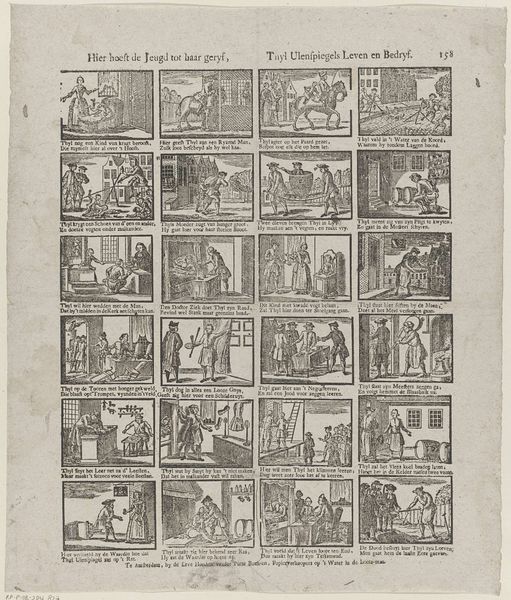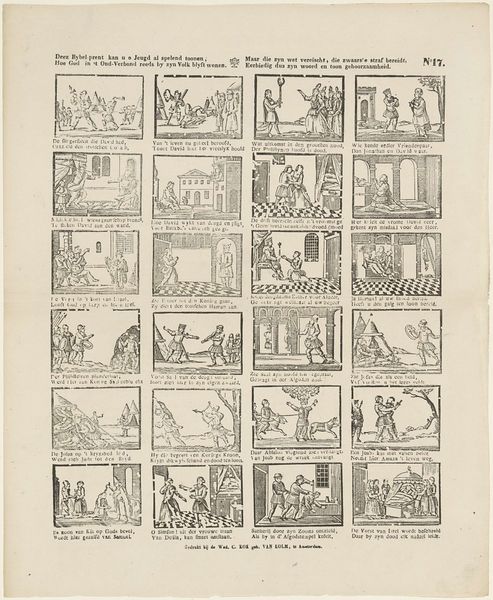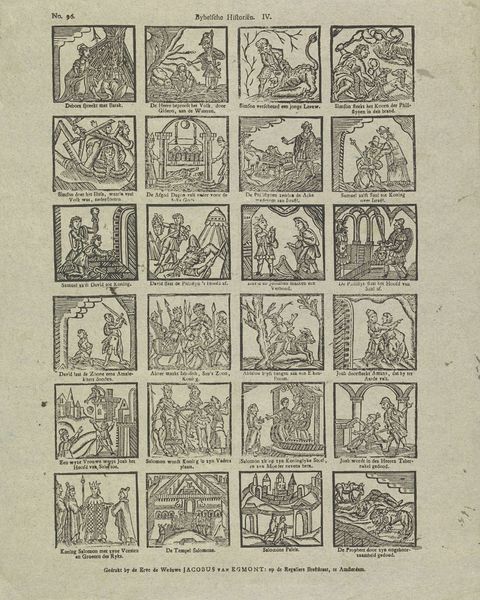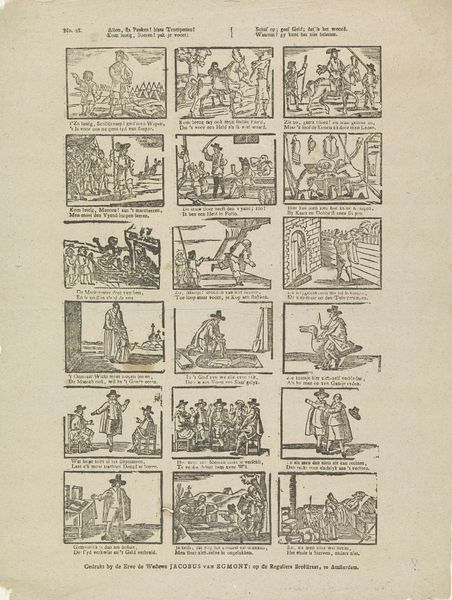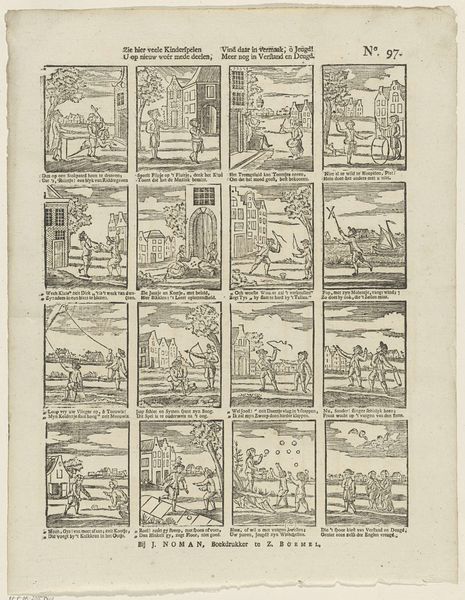
Let, jongens! op deez' prent, zo ze u behaagt, en ziet / Daarin, wat in den kryg te land en zee geschiedt 1806 - 1830
0:00
0:00
print, pen, engraving
#
comic strip sketch
#
weapon
#
narrative-art
#
dutch-golden-age
# print
#
old engraving style
#
pen-ink sketch
#
comic
#
line
#
pen
#
history-painting
#
engraving
Dimensions: height 400 mm, width 318 mm
Copyright: Rijks Museum: Open Domain
Editor: This engraving, "Let, jongens! op deez' prent…" by Johan Noman, likely created between 1806 and 1830, really strikes me with its comic-strip-like presentation of warfare. The material—ink on paper—and the repetitive scenes almost flatten the grand narratives usually associated with war. What do you see in this piece? Curator: I see a deliberate demystification of war through the very means of its production. Engravings like this were often mass-produced, intended for wide circulation. Consider the labour involved in creating these miniature scenes, replicating them, printing them—all to depict, and arguably, to make light of "war on land and sea." It raises the question: how does the seemingly simple act of disseminating images change public perception, especially in an era defined by upheaval and conflict? Editor: That’s interesting. It seems to draw out and critique the concept of the “heroic” in warfare via this almost industrialized process. Does the medium undermine the message? Curator: Perhaps "undermine" is too strong, but it certainly reframes it. The readily available nature of such prints encourages wider consumption. The viewer engages with images of conflict, not as singular monumental events, but as readily consumed narratives available to most literate people. How does this shift the power dynamic between those in power and those who are informed, or perhaps, misled? It is about how war is represented but, more fundamentally, about who has access to, and control of that representation. Editor: I hadn’t considered the implications of mass production like that. Curator: Examining art through the lens of its material creation and circulation provides deeper insight into the culture of the time. Editor: Right, so considering the process gives us a new framework to evaluate art’s impact and social function. Thanks for your thoughts!
Comments
No comments
Be the first to comment and join the conversation on the ultimate creative platform.

